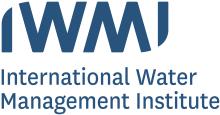Resource information
Agriculture is the main sector of the Ethiopian economy, as is the case in many sub-Saharan African countries. In this region, rainfall distribution is extremely uneven both spatially and temporally. Drought frequently results in crop failure, while high rainfall intensities result in low infiltration and high runoff, causing soil erosion and land degradation, which contribute to low agricultural productivity and high levels of food insecurity. High population growth and cultivation of steep and marginal lands, together with poor land management practices and lack of effective rainwater management strategies, aggravate the situation. Over the past two decades, the Government of Ethiopia has attempted to address these issues through the large-scale implementation of a range of soil and water conservation measures, including stone terraces, soil bunds and area enclosures. Despite these efforts, adoption of the interventions remains low. Studies from the Ethiopian Highlands show that the adoption of rainwater management technologies is influenced by a variety of factors, including biophysical characteristics such as topography, slope, soil fertility, rainfall amount and variability. However, even when technologies are appropriate to a particular biophysical setting, they may not be implemented, because farmers usually consider a variety of factors when making their decisions to adopt technologies. Thus, gaining an understanding of the factors that influence the adoption of rainwater management technologies is crucial for improved management of land and water resources. In this context, this study has been carried out within the framework of the Nile Basin Development Challenge (NBDC) project of the CGIAR Challenge Program on Water and Food (CPWF), which aims to improve rural livelihoods and their resilience through a landscape approach to rainwater management in the Ethiopian part of the Blue Nile River Basin.



